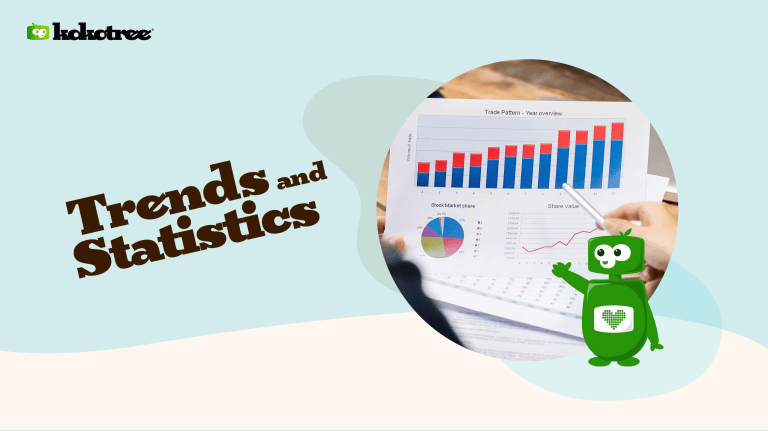

The early childhood education landscape is constantly evolving, and educators, parents, and policymakers need to stay informed about the latest statistics and trends.
In this blog post, we will provide an overview of some of the key statistics and current trends in early childhood education, including the growth of the education market, the increasing use of technology in the classroom, and the growing recognition of the importance of early childhood education.
It is good to note that these statistics and trends are subject to change and may differ when you read this post.
We do our best to provide accurate and up-to-date information, but the education field is fluid and constantly changing. It is essential to stay informed about the latest developments and trends in early childhood education.
With that in mind, let’s look closely at some key statistics and trends in early childhood education.
AI technologies like ChatGPT, Google Bard, and others are increasingly being used in early childhood education, and they can potentially transform the field significantly. Here are some key points based on my research:
However, there are also concerns about the use of AI in education. These include the potential loss of human interaction, data privacy issues, and the risk of AI perpetuating biases. AI in education must be monitored and regulated to ensure that it is used ethically and responsibly, focusing on enhancing the learning experience for students rather than replacing human teachers.
These statistics are based on research and data from various sources, including the National Center for Education Statistics, the National Institute for Early Education Research, and the U.S. Department of Education.

Get free parenting tips, news, updates, and content from Kokotree.
(in millions)
| 2020 | 3.61 |
| 2019 | 3.75 |
| 2018 | 3.79 |
| 2017 | 3.86 |
| 2016 | 3.95 |
| 2015 | 3.98 |
| 2014 | 3.99 |
| 2013 | 3.93 |
| 2012 | 3.95 |
| 2011 | 3.95 |
While the standard image of the nuclear family with two parents and 2.5 children has persisted in the American imagination, the number of births in the U.S. has steadily decreased since 1990, with about 3.61 million babies born in 2020. In 1990, this figure was 4.16 million. (source)
According to the USDA, parents could spend anywhere from $15,438 to $17,375 annually bringing up a child in 2022. Remember that this number is an estimate and can change based on location and family income.
The amount of money a parent spends on a child can vary greatly depending on factors such as age, where they live, and individual needs. According to a recent U.S. Department of Agriculture study, the average cost of raising a child from birth to age 17 is $233,610 in the United States.
This figure includes expenses for housing, food, child care, education, and other necessities. However, this number can vary widely depending on the specific circumstances of the child and their family.
The cost of living goes up yearly, and the need to invest in child care and education comes with that. This is something that most parents have to do to afford to live. Parents can expect to pay around $2,748 a year on child care and education. This amounts to 16% of the overall cost of raising a kid. This does not include expenses related to sending your child to college.
The National Association of Child Care Resource and Referral Agencies reports that the average preschool costs between $4,460 and $13,158 per year. That comes to an average of $372-$1100 per month–a significant expense for many parents. Most parents can expect to pay about $400-$900 per month for their child to attend an accredited preschool. (source)
The majority of parents with children aged 5 to 11 report that their child does this (89%), compared with those with a child aged 3 to 4 (81%) and those who have a child old two or younger (57%). (source)
As much as parents love YouTube videos for their children, more than four in ten say that their 11-year-old or younger has received inappropriate material. This number is even higher for parents of 5 to 11-year-olds (56%) than those with children four years old or younger (28%). (source). 2022
These trends in early childhood education reflect the growing recognition of the importance of using innovative and effective teaching strategies to support the learning and development of young children. They also reflect the increasing availability of technology and other resources that can help educators to create engaging and effective learning experiences for young children.
It is difficult to predict the issues that will be most pressing in early childhood education in 2023, as many factors can influence the challenges and opportunities faced by the field. However, here are a few issues that are likely to continue to be important in the coming years:
Technology has the potential to play a significant role in early childhood education, both as a tool for learning and as a means of supporting the work of educators. Here are a few ways in which technology is currently being used in early childhood education:
While technology has the potential to support learning and teaching in early childhood education, its use must be carefully considered and balanced with other forms of instruction and support. Children must also have opportunities to engage in hands-on, experiential learning and use technology in developmentally appropriate ways.
Here are a few examples of how AI could potentially be used in transformative ways to change the early education space for preschoolers, toddlers, and school-age children:
Overall, the potential for AI to transform the early education space is significant, and the use of AI in early education is likely to continue to grow and evolve in the coming years. It is essential to consider the ethical and social implications of using AI in education and ensure its use is balanced with other forms of instruction and support.




